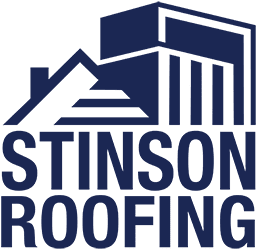
The Great Debate
If you were to survey a group of roofing contractors in Minnesota about which roofing product is currently the best on the market, more than likely they would say asphalt. However, over the past few years many roofing contractors are starting to view steel roofing products as a great roofing option. Recent technological advancements have created steel roofing products that are built to last.
The debate on metal vs. asphalt roofing is not black and white, making it difficult for consumers to decide which product is better for their property. Below we’ve provided some history and thoughts on each product. We hope this will help educate homeowners on the strengths and weakness of each.
Sign up for a Free Estimate today!
Asphalt Roofing MN
The history of the asphalt shingle is rooted to the early 1900s, when the basic makeup of a shingle was a paper material covered with tar. These historic shingles required lots of manual labor and broke down when exposed to extreme weather.
As asphalt shingles evolved, fiberglass matting was incorporated to replace the paper material to help performance and durability. A self-sealing component was created to speed up the installation process for asphalt roofing crews. The asphalt shingle continued to progress quickly due to the ease of application, low costs, and excellent performance it displayed.
The present-day asphalt shingle still offers the fiberglass base, self-sealer, and durability the public grew fond of, and there are thousands of styles and colors to choose from. The asphalt shingle is still the most common roofing material used in North America, according to Howstuffworks.com, and continues to deliver to households around the U.S.
Asphalt Roofing Strengths & Weaknesses
Pros:
- Easy application
- Lower costs
- High performance
- Many styles and colors
- Proven track record
Cons:
- Vulnerable to hail and high winds
- Heavy to work with at times
- Not as environmentally friendly as other products
Steel Roofing MN
The history of metal roofing materials dates back as far as the 1700s, when copper metal sheets were used to cover the roof of buildings such as the Christ Church in Philadelphia, according the nps.gov. These styles of metal roofs experienced problems with the weather, causing them to rust and corrode over time.
As technology improved and epoxies, ceramics, and nanotechnology were instilled into the metal roofing process, the U.S. has seen a rise in the durability and output of metal roofing products. These materials offer protection from rust, water, and harmful UV light, which cause wear and tear to metal roofing components. Now metal roofs range from copper, aluminum, lead, and steel roofing materials.
Steel roofs are friendly to the environment and offer many styles and colors similar to asphalt roofing products. Another perk for steel roofing is that warranties seem to be longer than asphalt by 10 to 20 years. Some insurance companies offer discounts to homeowners who install steel roofs because it reduces the risk that they’ll have to pay a claim for fire or storm damage.
Metal roofing still has expensive material costs. Even though installation times are speeding up they still lack compared to asphalt, so labor charges are higher. However, steel roofs do provide better protection for your home compared to asphalt.
Steel Roofing Strengths & Weaknesses
Pros:
- High weather performance/fire performance
- Environmentally friendly
- Many styles and colors
- Longer warranties and insurance discounts
- Greater durability than asphalt
Cons:
- More involved and longer application
- Higher costs than asphalt
- Quality issues with low-quality metals

0 Comments